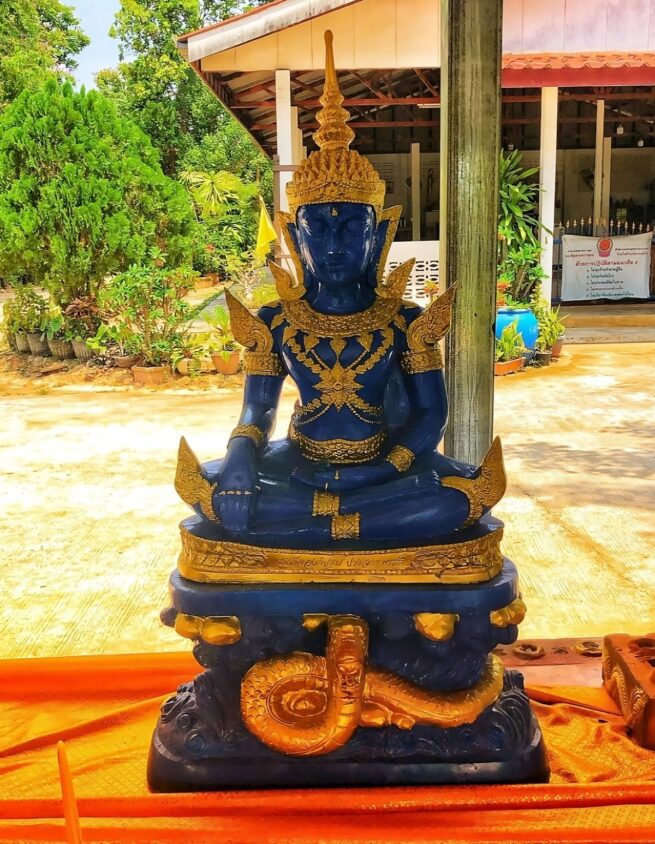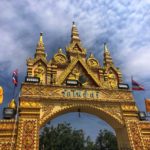Esoteric Symbols in Thai Buddha Statues

Most people aren’t aware of “mystical Thailand” and the esoteric symbols found in many Thai Buddha statues. These hidden symbols make temple visits all the more interesting, when you realize they are waiting to be discovered.
For example, take this blue Buddha statue at Samnak Song Hin Taek Phawana (seen above). Note the serpent at the base, which in esoteric tradition symbolizes Kundalini — the dormant spiritual energy located at the base of the spine and makes it way up in serpentine fashion through various chakras until it reaches the pineal gland.
The pineal gland is a small endocrine gland located in the brain. Scientists say that the gland produces melatonin and is responsible regulating the body’s internal clock, as well as our moods and certain hormones. Mystics refer to the pineal gland as the “third eye” due to its association with spiritual enlightenment and profound states of higher awareness. The gland was given the name “pineal” because it looks like a pine cone.
You’ll see this third eye in the forehead of the blue Buddha statue above. Note also how part of his gold crown resembles a pine cone. Thus we have a symbolic representation of how the Buddha was able to harness the Kundalini life force (serpent) to awaken his third eye (pineal gland) and achieve full enlightenment.
Esoteric Buddhist monks in Thailand develop secret chants which are said to have the power to activate the pineal gland, allowing them entrance into higher states of consciousness and enabling them to see into the future, diagnose hidden health problems, or (as was famously done by Sakon Nakhon monk Phra Ajahn Wan Uttamo) walk through a hail of soldiers’ gunfire unharmed.
Christians might find interesting that pine cone (pineal gland) symbolism also occurs in Christian history, with the pine cone representing “Christ consciousness” in various religious artwork. A large bronze pine cone sculpture is also found in the courtyard of the Vatican museum.
- Affirmations in Buddhism & Thailand - June 7, 2025
- Speak Thai Naturally Without the Gymnastics - April 20, 2025
- The Best Learn Thai Podcast and YouTube Channel - April 10, 2025




